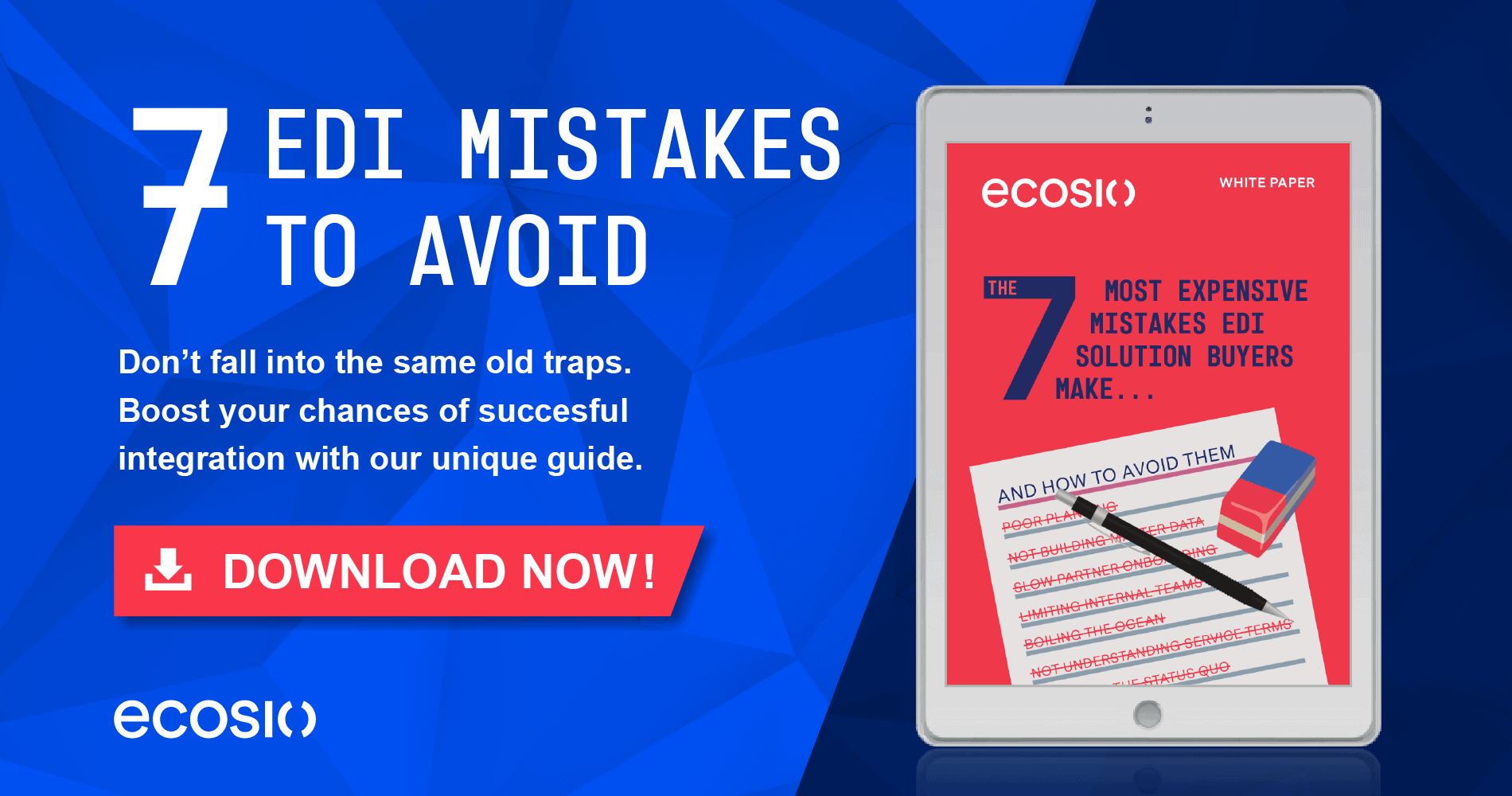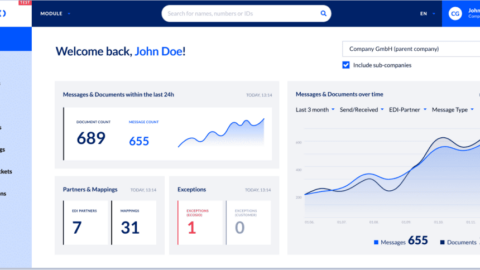There is a lot going on in the world of EDI at the moment. In many companies EDI solutions have grown organically over the years and are still operated in-house. In such situations, as associated local infrastructures age and those responsible for setting up the systems leave the company, it becomes essential to upgrade. As a result, many businesses are planning and implementing new EDI processes. In the recent surge to update EDI solutions, five key EDI trends have emerged…
1) More businesses are opting to buy instead of make
In recent years more and more businesses are looking to hand EDI functionality to specialised service providers. As businesses concentrate more on the core activities that generate value, the EDI issues connected to these activities, such as message monitoring and proactive troubleshooting, are increasingly being taken over by external experts.
2) People want wider supplier integration
Along with sales, efficient and targeted procurement is one of the most critical issues for companies today. Via EDI suppliers now not only receive electronic orders, but also forecast data based on the planned and projected sales data of the customer. This allows future procurement peaks to be recognised at an early stage and countermeasures to be taken with the relevant suppliers accordingly. In order to reach all suppliers, not just large ones, web-based portal solutions (also called Web EDI) are increasingly being used. Web EDI allows even the smallest suppliers (i.e. the so-called “long tail”) to be connected to your ERP via EDI, and thus enables companies to fully automate procurement processes across their entire partner network.
3) Everyone wants more EDI
One of the most notable EDI trends is that EDI itself is trending! Increasingly, big industry players – such as supermarkets in the retail sector or car manufacturers in the automotive industry – rely on even deeper EDI integration and demand more detailed data from their suppliers. Consider, for example, the growing use of delivery notifications with corresponding pallet labelling in the retail sector (already standard in the automotive industry) or the use of business acknowledgements in the automotive industry to confirm the receipt of a delivery notification. This has been common practice in the USA for a long time, but is now also coming to European manufacturers.
In addition, process changes such as the trend towards “just-in-time” and “just-in-sequence” in the automotive industry or the increasing consignment business in industry in general also necessitate new EDI connections. In retail, VMI (Vendor Managed Inventory) is placing new demands on suppliers, who now have to control their own shelf replenishment with sales data and stock level data from the customer. Other areas, such as logistics, would not be feasible at all without EDI.
4) Old standards are being consolidated
If you look at EDI infrastructures that have grown up in large companies today, you will discover a multitude of different EDI standards and formats. These range from flat text files to CSV, TRADACOMS (still a big issue especially in the UK), EDIFACT, ANSI ASC X12, XML and JSON. On consideration, we can see that old flat text-based formats like VDA are consolidating on EDIFACT, while TRADACOMS formats are also moving further towards EDIFACT. Especially in the USA, there is still a strong focus on ANSI ASC X12 – something that is unlikely to change in the foreseeable future. Practically everything to do with electronic invoices from public authorities is XML-based. Meanwhile JSON plays an important role today, especially in API-based connections.
Unfortunately older EDI providers are often not technologically capable of keeping up with these consolidations. As a result more tech-savvy providers must find a way to lift old legacy applications onto new technological legs.
5) The authorities want more electronic data
…especially electronic invoice data. Having started in Central and South America and Scandinavia, the wave of mandatory electronic invoicing has definitely arrived. In Italy, there have been no paper invoices since the beginning of 2019 and several other countries are planning to follow suit. It is unlikely to be long before other document types, such as electronic orders, also become mandatory.
Want more info?
If you’re interested in learning more about EDI trends and how you can optimise your EDI solution, why not check out our resources section, which is filled with all sorts of useful assets, from articles and infographics to white papers and webinars? Our detailed case studies also provide a helpful overview of both the process and the impact of moving to fully managed EDI.
Discover more about our updated product, ecosio.flow.
Get in touch
If you’d like to learn more about ecosio’s fully managed EDI solution, contact us today! We are always happy to help and answer any questions you may have.













